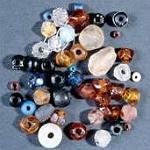PhD project
Trade as a meeting of cultures - European artefacts in the late Thule Culture

Trade was the main motivation for the cultural meeting between European whalers, merchants and missionaries and the Inuit of the late Thule Culture. The aim of this project is to study the spread and cultural adoption of European trade-goods in order to study the nature of the cultural meeting between Europeans and Inuit in 17th, 18th and 19th century Greenland. The focal point is an archaeological analysis of the reworking of European trade-goods and their context of deposition as means to decipher the social biographies and histories of European artefacts. Further this analysis will be combined with studies of European historical sources on trade and testimonies of trade and trade-goods in Inuit oral tradition in an ethno-historical approach.

The project compares three geographical areas with varying degree of access to European trade-goods/traders. The Disco Bay was one of the scenes for the first random meetings with European whalers in the 17th century. In the 18th century the European presence in the bay became permanent, as Danish colonies were established. Further south in the Godthåb Fjord European artefacts are known from several Late Thule settlements. Furthermore both Danish and Moravian missions were founded in the fjord during the 18th century. In complete contrast European artefacts was brought to Eastern Greenland by Inuit middlemen up to the founding of a Danish colony in the late 19th century. The purpose of the comparative approach is to shed light on, how the varying degree of access to European artefacts and different patterns of trade affected the range of trade-goods and the social meaning of the foreign artefacts in the Thule culture.
Hovedvejleder: Lektor Søren Thuesen, Institut for Tværkulturelle og Regionale Studier, afdeling for Eskimologi og Arktiske Studier, Københavns Universitet.
Medvejleder: Forskningsprofessor dr. phil. Hans Christian Gulløv, SILA - Nationalmuseets Center for Grønlandsforskning.
Finansiering: Nationalmuseet, Dansk Arkæologisk Forskerskole og Kulturministeriet.
Projektperiode: 1. december 2006 - 31. august 2010.
Forskerskole: Dansk Arkæologisk Forskerskole og Kulturarvens Forskerskole.
